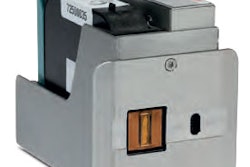
“After today I hope you come away with a sense of how the last mile is so important,” said Patricia Beckenhaupt, Public Health Analyst for the CDC.
“While I’m talking this morning, think about your next flu shot, or your children’s next visit to the pediatrician for vaccinations, or your elderly parent and their shingles vaccine,” Beckenhaupt told the audience at the 12th Annual Cold Chain GDP & Temperature Management Logistics Global Forum in Boston Oct. 2.
More than 44,000 providers are enrolled in a $4 billion program funded by taxpayers to vaccinate children with no health insurance from poor families. The CDC is charged with oversite of these publicly funded vaccines.
“What we know from CDC data, is that at any given time a small provider can have $5,000 worth of vaccines in storage; a larger provider as much as $75,000.”
This past July, Hartford Healthcare in Connecticut was discovered to have improperly monitored storage temperatures in four storage units over a period of a year and a half—an oversite affecting more than 4,000 children, who may have to be vaccinated again.
The CDC wants providers to move toward storage and handling best practice recommendations as soon as possible to avoid these types of situations.
Proper equipment is key, of course, but human behavior matters too. In the case of Hartford Healthcare, a great system was in place, but no one bothered to pay attention.
One of the biggest problems is the common household refrigerator, which is not suited to vaccine storage.
These household units do not maintain temperatures correctly. The compressors do not cycle consistently, air circulation patterns cause warmer areas and cooler areas, and outside temperatures have too much affect when doors are opened and closed. Location of the thermostat is also an issue.
Especially problematic is the dual-zone unit with a freezer on top. Vaccines can freeze on the top shelf of the refrigerator or toward the back of the refrigerator.
It is important to have the right refrigeration unit or freezer for the task at hand. Thermometers used for monitoring temperatures must have valid and current certificate of traceability and calibration testing.
Beckenhaupt stated that all thermometers drift over time, and cold chain requirements are too stringent to be out of calibration more than +/- 5° C.
Providers should access and record temperatures twice a day, and keep records for three years. And the temperature monitor has to be placed precisely in the unit where the vaccines are stored.
The CDC recommends using a data logger with digital display, also needing calibration.
The thermometer probe has to be in a buffered solution, and the probe must be detachable so you can remove data logger to download data without removing the probe.
“Without following these basic guidelines, chances of excursion are HIGH,” said Beckenhaupt.
Some common errors in vaccine storage and handling:
• Temperature monitor not placed with vaccines
• Device probe sensor is not buffered
• No one is checking temperature on daily basis
• Temperature alarm has been disabled
• Staff not using data provided, nothing done about excursions.
Providers can access a CDC Storage and Handling tool kit.





















